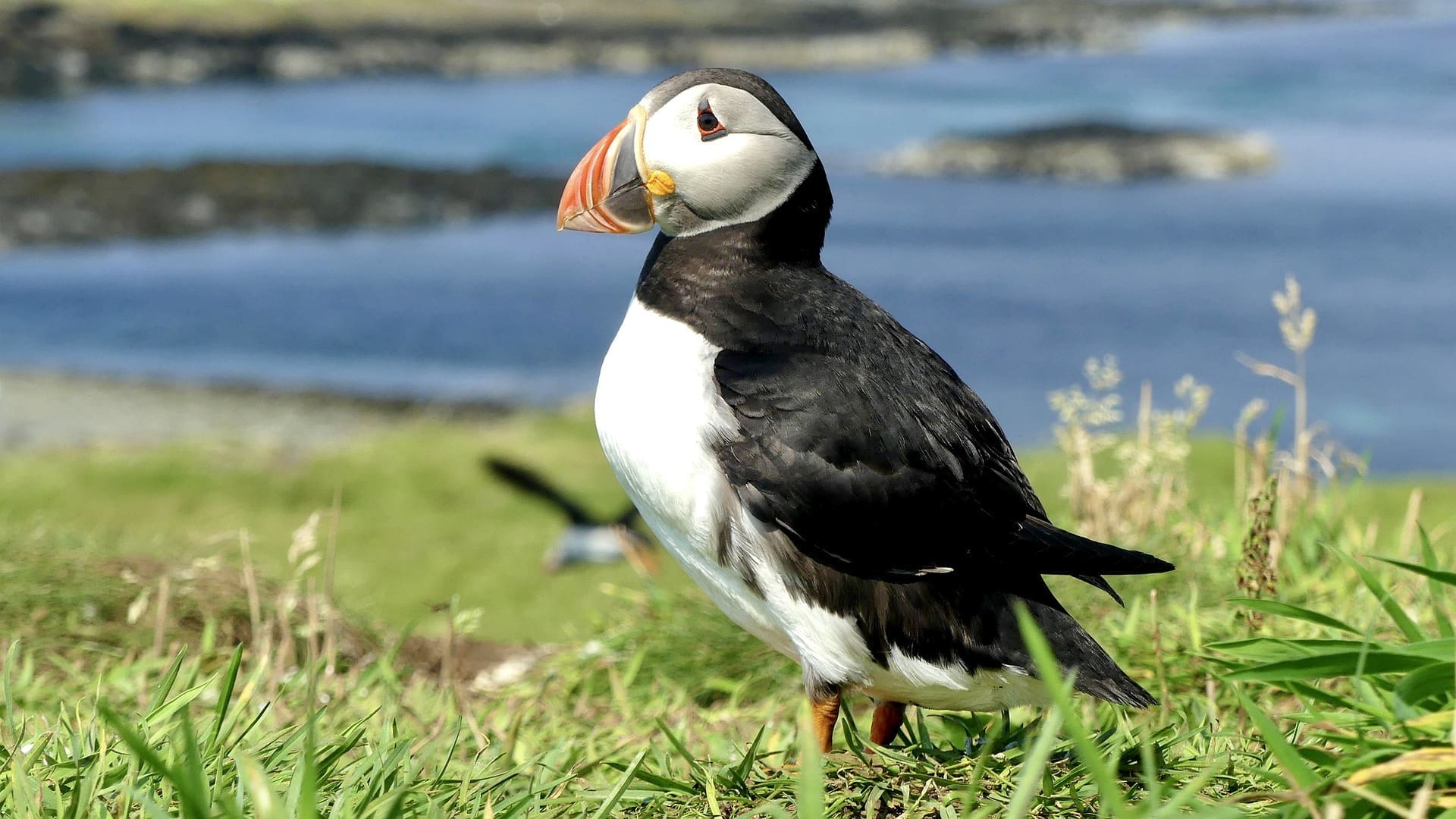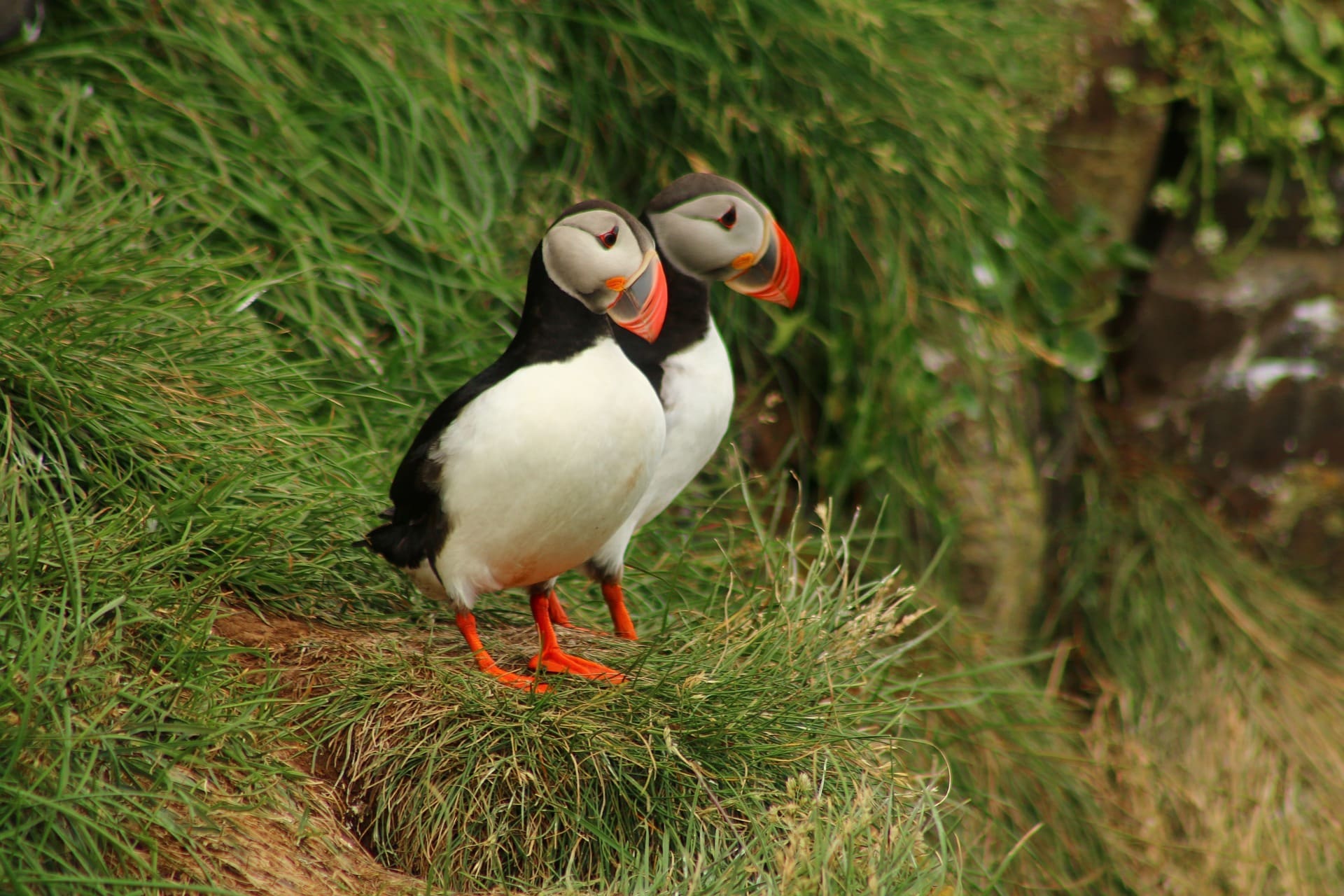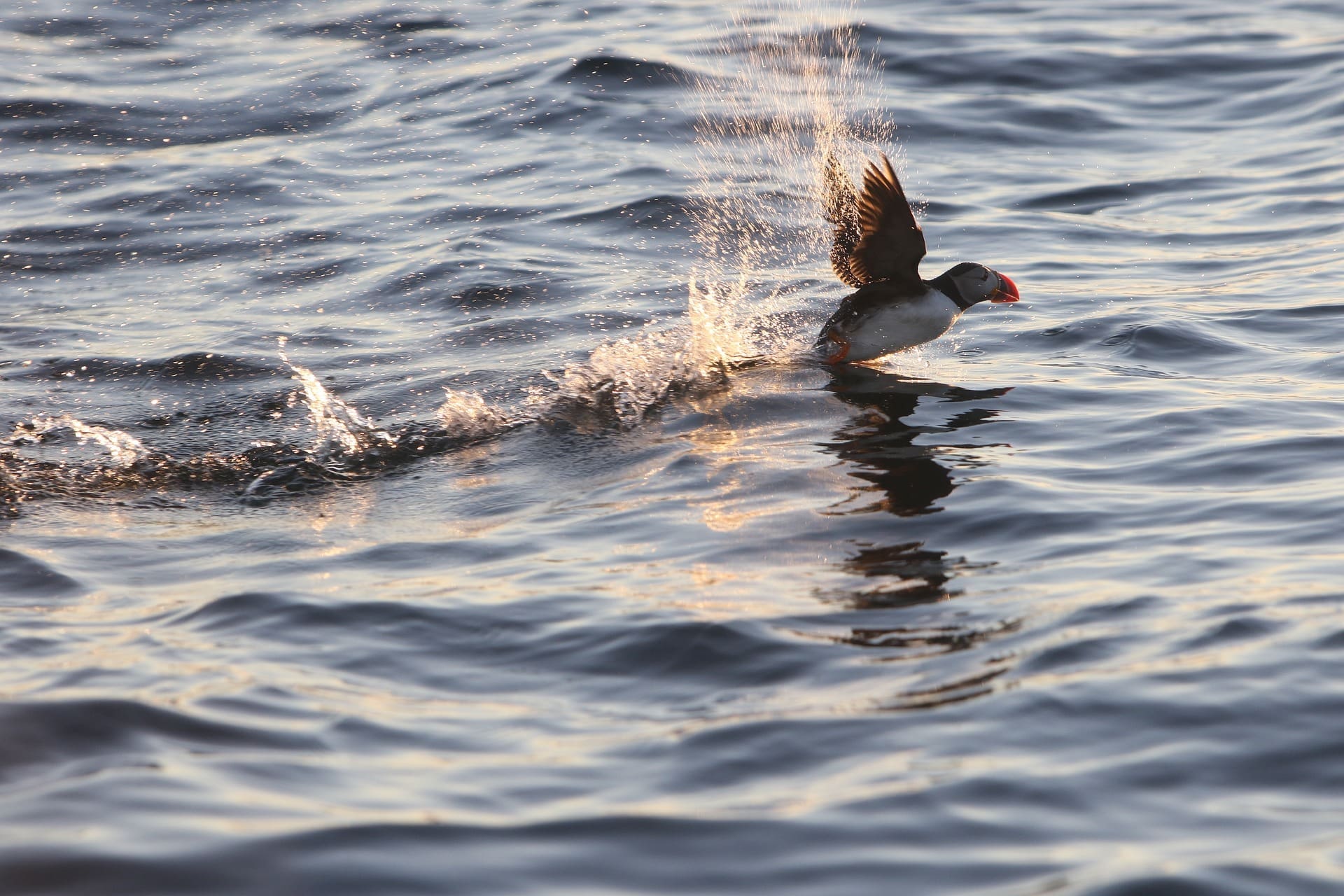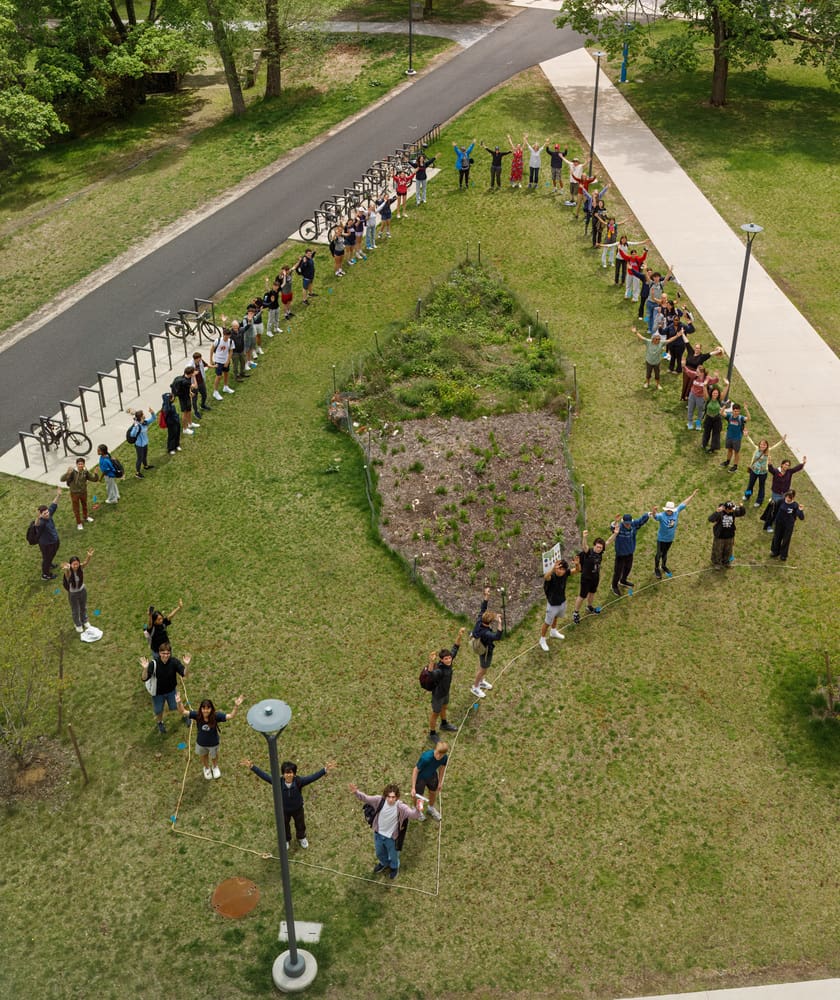What striking seabird is a master of adaptability in the ocean and the air?
The Atlantic Puffin!

Nestled around the edges of the North Atlantic, the Atlantic Puffin, or Fratercula arctica, is a seabird of great charm and adaptability. Resembling a penguin in its coloration, yet distinguished by its multicolored and uniquely shaped bill, this captivating creature is often affectionately dubbed the “sea parrot.”
Atlantic puffins have also been known as “sea clowns” because of that funky flattened bill, but make no mistake – these are some seriously impressive seabirds. With sophisticated burrows, skillful hunting, and dedication to raising families with determined care, these bright birds are marvels of the ocean.
Aquatic Aviators
Atlantic puffins spend the majority of their lives navigating the vast expanse of the North Atlantic, where they are found on islands and coastal shores from North America to Scandinavia. With wings that double as paddles, they can “fly” through the water, propelled by powerful flippers and webbed feet.
These adept swimmers dive to impressive depths of up to 200 feet, hunting small fish like sand eels and herring with remarkable precision. In addition to their aquatic prowess, puffins can also fly, though they are unable to soar like other broad winged seabirds. Instead, using wings that can flap up to 400 times per minute, Atlantic puffins are able to reach speeds of up to 55 miles per hour (88.5 km/h).
Family Life
During the breeding season, thousands of puffins gather in colonies along the coasts and islands of the North Atlantic. These colonies provide safety in numbers, shielding the birds from larger predators like skuas and gulls that patrol the skies above. The breeding season sees puffins at their most colorful, with those distinctive bills featuring their blue-gray triangles accented in bright yellow. When the season is over, the bills’ outermost layers actually molt, and revert to a partly gray and partly orange color combination.
Puffins exhibit strong pair bonds, often forming lifelong partnerships with their mates. They engage in affectionate behaviors such as rubbing and tapping beaks, reinforcing their bond year after year. Remarkably, these avian couples frequently return to the same burrow to raise their young each season.
Using their beaks and claws, they construct deep burrows that nestle between rocky crags and crevices. These generally feature separate tunnels that are used as a bathroom area, and a main nesting chamber that serves as a safe haven for incubating eggs, which hatch after a period of 42 days.
Pufflings, as these chicks are called, are adorned with fluffy feathers that will eventually facilitate their ability to swim and fly. Both parents play an active role in incubating the egg and caring for their offspring once it has hatched, fetching food for the young puffling with skill and dedication. They make use of a unique adaptation of small spines along their bills, tongues, and the roofs of their mouths that allow them to hold bunches of fish in place as they fly from their hunts on open waters back to the nests where their young ones wait. It is estimated that during the time a puffling stays in its burrow dependent on this care, its parents will make close to 12,400 dives total to keep up the steady supply of food.

Persevering Under Threat
Despite their remarkable adaptability, Atlantic puffins face a number of challenges in the modern world. From habitat loss and predation to climate change and human disturbances, these beloved seabirds are confronted with an uncertain future, and they are currently classified as Vulnerable by the IUCN (International Union for Conservation of Nature). In particular, as ocean temperatures rise and fish populations decline or shift their habitat, puffins struggle to find food with enough frequency and reliability to get by. Conservation and restoration measures can help ease these pressures by preventing overfishing, ensuring abundant marine ecosystems, and allowing all forms of ocean life, from underwater critters to seabirds, to survive and adapt. While the intersecting challenges of a warming and increasingly chaotic planet may be complex, modifying human behaviors has made a tremendous difference for these colorful creatures before.
Take a look at the story of their bounce back from near extinction in the 20th century:
May we take hope in our power to shape our planet’s future for the better, and show the same love and dedication to these sweet seabirds as they do to their young pufflings.
Flapping away now,
Maya

Maya Dutta is an environmental advocate and ecosystem restorer working to spread understanding on the key role of biodiversity in shaping the climate and the water, carbon, nutrient and energy cycles we rely on. She is passionate about climate change adaptation and mitigation and the ways that community-led ecosystem restoration can fight global climate change while improving the livelihood and equity of human communities. Having grown up in New York City and lived in cities all her life, Maya is interested in creating more natural infrastructure, biodiversity, and access to nature and ecological connection in urban areas.
Sources and Further Reading:
https://www.allaboutbirds.org/guide/Atlantic_Puffin/overview#
https://www.nationalgeographic.com/animals/birds/facts/atlantic-puffin
https://kids.nationalgeographic.com/animals/birds/facts/atlantic-puffin
https://www.audubon.org/field-guide/bird/atlantic-puffin
https://abcbirds.org/bird/atlantic-puffin/
https://www.science.org/content/article/watch-puffin-use-tool-scratch-itch
Recent changes in the diet and survival of Atlantic puffin chicks in the face of climate change and commercial fishing in midcoast Maine, USA. Stephen W. Kress, Paula Shannon, Christopher O’Neal. FACETS 21 April 2016. https://doi.org/10.1139/facets-2015-0009




